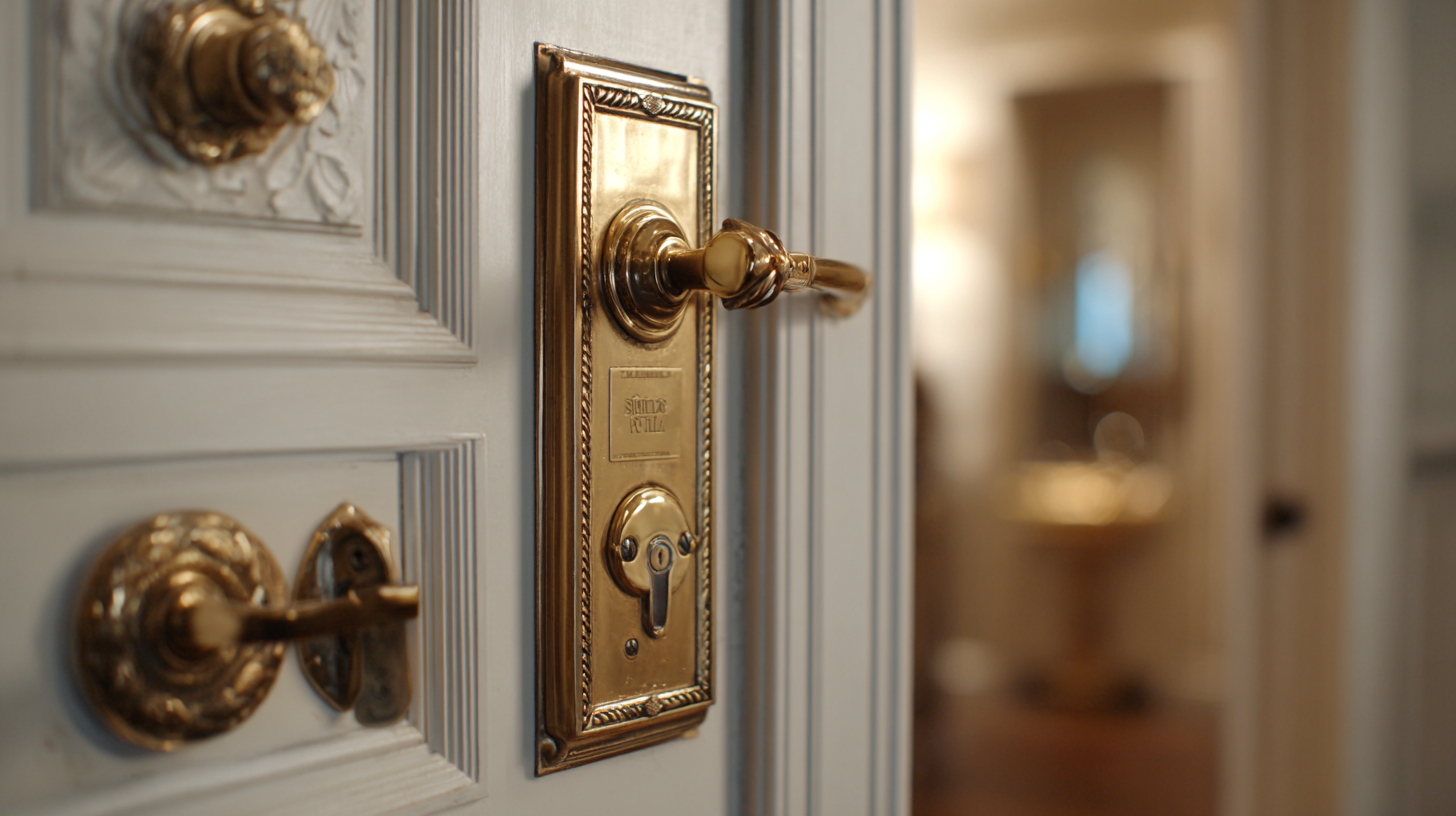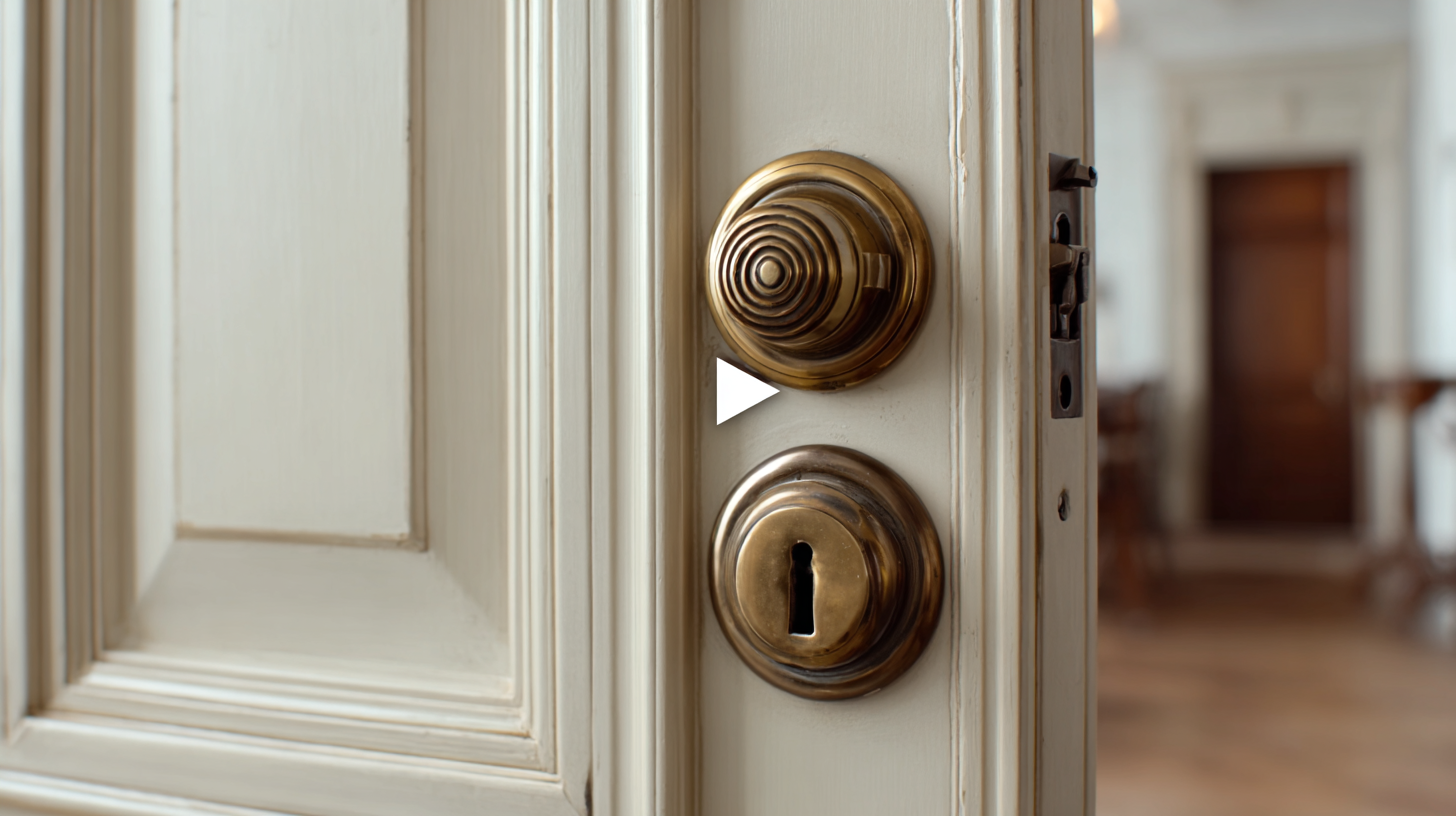Troubleshooting Common Issues with Best Residential Doors: A Global Procurement Perspective
In today's competitive real estate market, the significance of high-quality residential doors cannot be overstated. According to a report by the Freedonia Group, the demand for residential doors is projected to reach over $12 billion by 2025, driven by home renovation activities and new construction projects. Residential doors serve not only as barriers against external elements but also play a crucial role in enhancing aesthetic appeal and energy efficiency. With the evolving construction trends and shifting consumer preferences, it becomes essential to understand the common issues associated with residential doors, especially from a global procurement perspective.

This blog will delve into the troubleshooting of these issues while highlighting the benefits of selecting the best residential doors, ensuring homeowners make informed decisions that contribute to long-term value and sustainability.
Identifying Common Problems in Residential Doors: A Global Overview
 When it comes to residential doors, identifying common problems is crucial for both homeowners and suppliers in the global market. Issues such as misalignment, difficulty in locking and unlocking, and warping due to changes in humidity can significantly impact the functionality and aesthetics of a home.
When it comes to residential doors, identifying common problems is crucial for both homeowners and suppliers in the global market. Issues such as misalignment, difficulty in locking and unlocking, and warping due to changes in humidity can significantly impact the functionality and aesthetics of a home.
Misaligned doors may stem from improper installation, settling of the house, or changes in temperature and moisture. These problems not only compromise security but also lead to increased energy costs as air leaks can occur.
Another prevalent issue is the material degradation associated with weather exposure. For instance, wooden doors are particularly susceptible to warping and rot, while metal doors may experience rusting in humid climates.
Global procurement strategies should address these vulnerabilities by sourcing materials that offer better resistance to environmental factors.
By understanding these common problems and their causes, suppliers can better inform homeowners about maintenance practices and material selection. This proactive approach not only enhances customer satisfaction but also contributes to sustainable practices in residential construction and renovation.
The Impact of Material Quality on Door Durability and Performance
The quality of materials used in residential doors plays a vital role in determining their durability and overall performance. According to the American Wood Council, doors made from high-grade hardwood or engineered wood can last up to 30 years when properly maintained, while those constructed from low-quality composites may only endure for about 10 years. This stark difference highlights the importance of investing in superior materials, as they not only enhance longevity but also improve insulation and energy efficiency.
Additionally, the durability of door materials significantly influences their resistance to environmental factors. A report by the National Association of Home Builders reveals that fiberglass doors outperform both wood and steel in terms of resistance to moisture and temperature fluctuations, which can cause warping and cracking. This makes fiberglass a preferred option in regions with extreme weather conditions. Therefore, choosing the right materials is essential for homeowners seeking reliable and long-lasting residential doors. Investing in high-quality materials can reduce the frequency of replacements and repairs, ultimately leading to cost savings over time.
Essential Maintenance Tips to Prevent Door Malfunctions
When it comes to maintaining the best residential doors, regular upkeep is crucial to prevent malfunctions that can compromise security and comfort. One essential tip is to routinely check the door hardware. Ensure that hinges, locks, and handles are free of rust and moving smoothly. Apply lubricant to these parts at least twice a year to avoid squeaks and stiffness, which can lead to more significant issues over time.
Another important aspect of door maintenance is inspecting weatherstripping. This material helps to seal gaps around the door, preventing drafts and moisture from entering your home. Over time, weatherstripping can wear out and become ineffective. Make it a habit to check for signs of deterioration and replace it if necessary. Doing so not only enhances energy efficiency but also protects against potential water damage.
Lastly, regular cleaning plays a vital role in door maintenance. Depending on the material of your doors, use appropriate cleaners that won't damage the surface. For wooden doors, a gentle polish occasionally can help maintain their finish and prevent splitting or cracking. For metal doors, ensure you remove any debris and clean the surface to prevent rust buildup. Incorporating these simple practices into your routine can significantly extend the life of your residential doors.
Troubleshooting Common Issues with Best Residential Doors
This chart displays common issues encountered with residential doors, along with their frequency based on a global survey of homeowners. Proper maintenance can help prevent these issues.
Understanding Global Procurement Challenges in Door Sourcing
Navigating the complexities of global procurement in door sourcing requires a keen understanding of the challenges that companies face today. Recent reports indicate that 76% of procurement leaders are prioritizing AI integration in their operations, as they seek to enhance efficiency and streamline sourcing processes. The emergence of generative AI technology is transforming how procurement teams assess suppliers, manage contracts, and predict market trends. This innovation fosters agility, allowing companies to respond swiftly to changing demands and mitigate risks associated with outsourcing.
Tips: When considering door sourcing, always evaluate your supplier's sustainability practices. Companies that actively promote inclusive sourcing not only enhance their brand image but also contribute positively to community welfare. Additionally, establish a strong communication channel with your suppliers to address potential disruptions in supply chains, which can be crucial in avoiding delays often driven by tariff changes or geopolitical tensions.
The consequences of poor procurement strategies have been starkly illustrated by recent cases in the aerospace sector, where outsourcing led to significant quality issues, reminding us of the importance of rigorous supplier evaluations. As the global landscape shifts towards more renewable solutions, procurement professionals must adapt and harness the benefits of innovative technologies while keeping an eye on ethical sourcing and environmental impacts.
Using Technology to Enhance the Selection of Residential Doors
 In today’s digital age, technology plays a pivotal role in enhancing the selection of residential doors. With advanced software and apps, homeowners can now visualize how different door styles will look on their properties before making a purchase. This capability allows for more informed decisions, reducing the likelihood of buyer’s remorse. Virtual reality tools can immerse potential buyers in realistic simulations, bringing design ideas to life and showcasing various finishes and materials with unprecedented clarity.
In today’s digital age, technology plays a pivotal role in enhancing the selection of residential doors. With advanced software and apps, homeowners can now visualize how different door styles will look on their properties before making a purchase. This capability allows for more informed decisions, reducing the likelihood of buyer’s remorse. Virtual reality tools can immerse potential buyers in realistic simulations, bringing design ideas to life and showcasing various finishes and materials with unprecedented clarity.
Tip: Utilize augmented reality apps to overlay different door designs onto your home’s exterior in real-time. This can save time and help clarify your vision.
Moreover, technology streamlines the procurement process. Online platforms provide access to a global marketplace, enabling consumers to compare prices and quality across a wide range of manufacturers. Not only does this enhance the selection process, but it also fosters healthy competition that can result in better deals and innovations in door manufacturing.
Tip: Research customer reviews and ratings on procurement platforms; these insights can guide you toward reputable manufacturers and help avoid common pitfalls.

